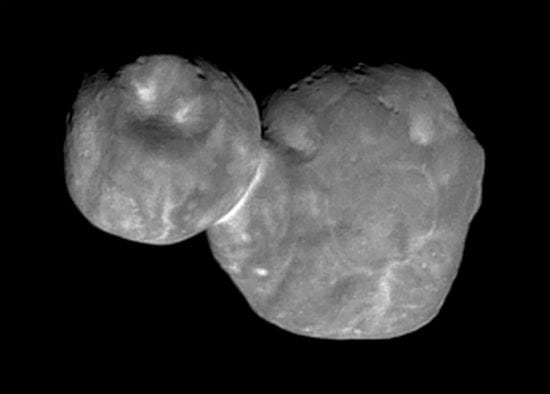OK, so I read this tantalizing Ross Anderson piece at The Atlantic — “The Most Mysterious Star in Our Galaxy” — and all I could think was Dyson sphere.
This mysterious star so far has only the unlovely name of KIC 8462852, and it’s not even visible to the naked eye. It’s one of 150,000 or so stars being examined by the Kepler Space Telescope in its search for exoplanets. It may have planets orbiting it, but it also seems to have … something else:
The light pattern suggests there is a big mess of matter circling the star, in tight formation. That would be expected if the star were young. When our solar system first formed, four and a half billion years ago, a messy disk of dust and debris surrounded the sun, before gravity organized it into planets, and rings of rock and ice.
But this unusual star isn’t young. If it were young, it would be surrounded by dust that would give off extra infrared light. There doesn’t seem to be an excess of infrared light around this star.
It appears to be mature.
And yet, there is this mess of objects circling it.
To be clear: We have absolutely zero evidence that this “mess of objects” orbiting KIC 8462852 is anything technological. All we really have at this point is some weird and puzzling data. But this is just exactly the sort of weird and puzzling data we might expect to see some day if/when we ever catch our very first glimpse of what might later turn out to be — let’s go ahead and say it — alien technology.
Phil Plait and all the other knowledgeable and responsible scientists I read about space stuff are knowledgeably and responsibly cautioning us not to jump to the long string of conclusions we would need to jump to at this point to decide this isn’t just some weird, new-to-us astronomical phenomenon with a perfectly natural explanation. Plait’s post was titled “Did Astronomers Find Evidence of an Alien Civilization? (Probably Not. But Still Cool.),” and that’s the general message they’re all emphasizing.

But underneath that cautious and responsible message, they’re all also visibly excited by this weird data about KIC 8462852. Because while we are still far, far away from any solid evidence of alien civilization, that’s not yet something that can be ruled out.
Some initial thoughts:
1. Data from the Kepler Space Telescope is being used in the search for exoplanets with great success so far. It seems our galaxy may have more planets than stars. This data is also being studied by those involved in the search for extraterrestrial intelligence — by bona fide scientists poring over its findings looking for data that might point to evidence of alien technology. We’re searching for signs that someone out there may have built something like a Dyson sphere.
That’s a smart approach. So smart, in fact, that I can’t help but wonder if anyone out there is looking our way and doing the same thing. Maybe some alien scientists have detected evidence of Earth technology, alerting them to our presence here. If so, they may have noticed our high altitude nuclear testing back in the 1950s and ’60s and decided we’re a bunch of dangerous bozos who aren’t worth risking a visit. It doesn’t make us look good that our most visible and prominent technology is stuff we’ve designed to kill one another.
We could improve our interplanetary reputation — and double our chances of SETI success — by undertaking something more peaceful, constructive and attention-grabbing. Like, say, building our own Dyson sphere.
2. The hint of a suggestion of a possibility of a shadow of a glimmer of alien technology is terrifically exciting, and this KIC 8462852 data will likely inspire some great science fiction storytelling. But storytellers should also pay attention to the wild theories attempting to provide a natural explanation for this observation. Don’t just give us stories about first contact or about alien civilizations and technology. I’d also like to see some stories about what it would be like if a renegade Oort Cloud were somehow dragged into our solar system.
3. We really need a better, catchier name for this star than KIC 8462852. Not just because that would be more convenient, but also because there’s a very slim chance that future data will strengthen our suspicion of intelligent life there enough to prompt us to attempt to contact or communicate with them. And if it ever came to that, we’d need some better way to address them than as “People of the KIC 8462852 system.” That would just seem sort of … rude.
4. What are the theological implications of this?
Well, if there is intelligent life out there orbiting KIC 8462852, then I would guess that their civilization probably includes a form — or, more likely, forms — of religion. And those religions likely have sacred texts that they regard as scripture.
So I would further guess that some of the folks looking back at us from out there are denying the possibility of our existence because we aren’t mentioned anywhere in their scriptures. I believe, in other words, that there is probably fundamentalist life in outer space.
These earthling-denying alien fundamentalists, like the terrestrial variety, probably drive most of the religious people of the KIC 8462852 system mad with frustration because of their weirdly obtuse parochialism. “Our scriptures were written by and for us,” these non-fundie believers say to their fundie counterparts for the umpteen-millionth time, “so why would you expect them to say anything about whatever sorts of people might be out there on a watery planet orbiting some distant yellow star? That’s not how scriptures work. That’s not what our scripture is for.”












